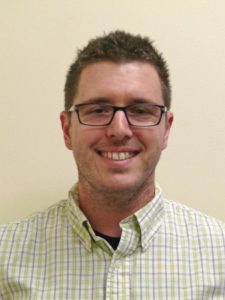KJ Consultants is proud to announce that two staff members from the Life Sciences & Risk Assessment Community of Practice are presenting their work at the Tenth International Conference on Remediation of Chlorinated and Recalcitrant Compounds in Palm Springs, California from May 22-26, 2016.
 On the evening of May 23, Josh Hopp is presenting a poster entitled Comparison of New Screening Criteria at Petroleum Vapor Intrusion Sites Using Multiple Sources of Empirical Data, co-authored by colleague Laura Kennedy. The presentation will compare data collected from vapor intrusion (VI) investigations at four different sites to EPA’s 2015 Technical Guide for Addressing Petroleum Vapor Intrusion at Leaking Underground Storage Tank Sites (PVI Guidance). The VI investigations involved sampling of groundwater, soil vapor, subslab vapor, crawlspace air, and indoor air in multiple buildings, which were a representative selection of structures overlying and adjacent to petroleum hydrocarbons in the subsurface. Recommended separation distances from the PVI Guidance will be compared with multiple lines of evidence evaluations from the VI investigations. The presentation will also discuss the challenges of sampling indoor air for petroleum hydrocarbons and how questionnaires and HAPSITE surveys were used to identify other potential sources that contribute to indoor air concentrations.
On the evening of May 23, Josh Hopp is presenting a poster entitled Comparison of New Screening Criteria at Petroleum Vapor Intrusion Sites Using Multiple Sources of Empirical Data, co-authored by colleague Laura Kennedy. The presentation will compare data collected from vapor intrusion (VI) investigations at four different sites to EPA’s 2015 Technical Guide for Addressing Petroleum Vapor Intrusion at Leaking Underground Storage Tank Sites (PVI Guidance). The VI investigations involved sampling of groundwater, soil vapor, subslab vapor, crawlspace air, and indoor air in multiple buildings, which were a representative selection of structures overlying and adjacent to petroleum hydrocarbons in the subsurface. Recommended separation distances from the PVI Guidance will be compared with multiple lines of evidence evaluations from the VI investigations. The presentation will also discuss the challenges of sampling indoor air for petroleum hydrocarbons and how questionnaires and HAPSITE surveys were used to identify other potential sources that contribute to indoor air concentrations.
 On the evening of May 25, Scott Larew is co-presenting a poster entitled Pilot-scale Comparison of Eight Biotreatment Approaches for Soil Containing TNT and DNT. The highlighted study focused on identifying a scalable approach for treating 2,4,6-trinitrotoluene (TNT) in soil from a former organic explosives manufacturing facility in New Jersey that balances physical effort (stirring) and amendment volume (and cost). The study processed soils in a manner that enhanced bioavailability and monitored the rate and extent of concentration reductions resulting from different soil amendments across eight different treatments. Changes in the concentrations of the parent compound, TNT, and its breakdown products (i.e., dinitrotoluenes, aminodinitrotoluenes, and diaminonitrotoluenes) were documented..
On the evening of May 25, Scott Larew is co-presenting a poster entitled Pilot-scale Comparison of Eight Biotreatment Approaches for Soil Containing TNT and DNT. The highlighted study focused on identifying a scalable approach for treating 2,4,6-trinitrotoluene (TNT) in soil from a former organic explosives manufacturing facility in New Jersey that balances physical effort (stirring) and amendment volume (and cost). The study processed soils in a manner that enhanced bioavailability and monitored the rate and extent of concentration reductions resulting from different soil amendments across eight different treatments. Changes in the concentrations of the parent compound, TNT, and its breakdown products (i.e., dinitrotoluenes, aminodinitrotoluenes, and diaminonitrotoluenes) were documented..
We hope to see you at the poster presentations!
SIGN UP!
If you are interested in more information on Kennedy Jenks, don’t forget to subscribe to our blog!

